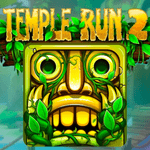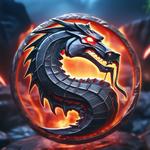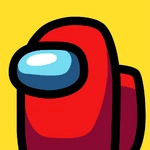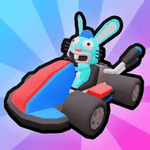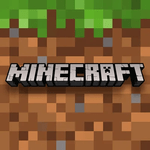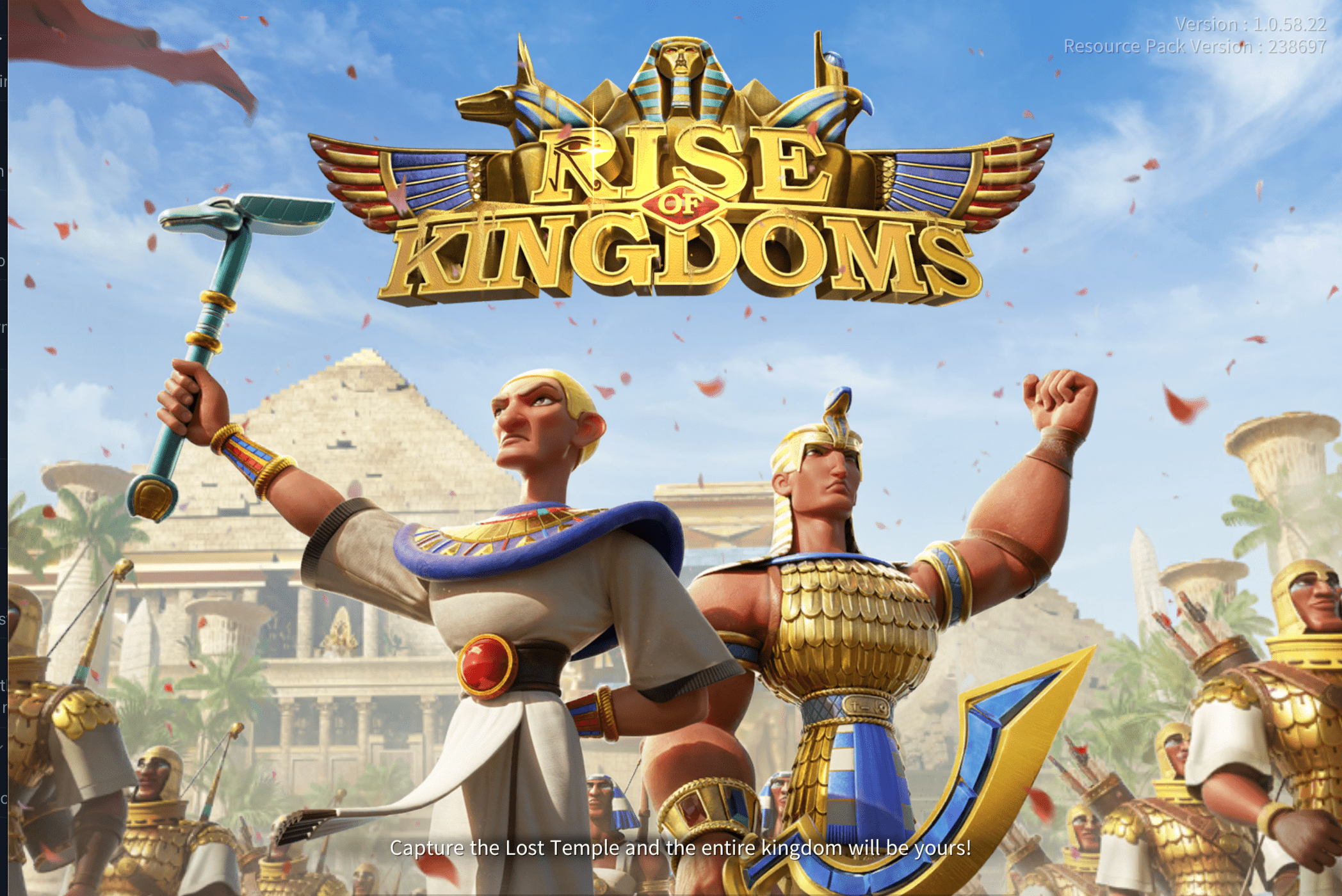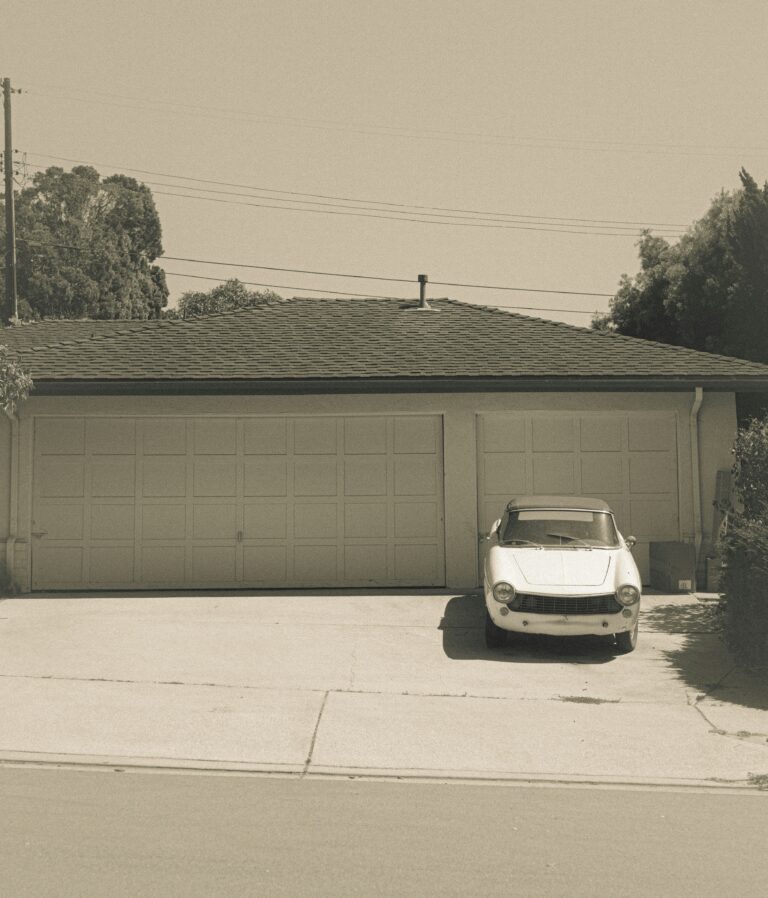As an engineering student, you possess a unique set of skills and perspectives that can be invaluable in the field of user experience (UX) design. While engineering and design may seem like vastly different disciplines, there are significant overlaps that can facilitate a smooth transition from one to the other.
One of the primary advantages of having an engineering background is your strong technical foundation. You understand the intricacies of how systems work, and you have experience in problem-solving, logical thinking, and analytical reasoning. These skills are crucial in UX design, where you need to understand the underlying technology and systems to create user-friendly and efficient interfaces.

Moreover, as an engineer, you have likely encountered situations where you had to consider the end-user’s needs and preferences. This experience can be a valuable asset in UX design, where the entire process revolves around understanding and catering to the user’s requirements. You already have a mindset that prioritizes user needs, which can give you a head start in the field.
Transitioning from engineering to UX design also allows you to leverage your expertise in a different way. While engineering often involves working with complex systems and technical details, UX design focuses on creating intuitive and delightful experiences for users. This shift in perspective can be refreshing and intellectually stimulating, allowing you to explore new creative avenues while still utilizing your analytical skills.
Furthermore, having a background in engineering can make you a valuable asset to cross-functional teams. You can act as a bridge between the technical and design teams, facilitating effective communication and ensuring that the user experience aligns with the underlying technology. This ability to understand and communicate with both sides can be invaluable in creating successful products and services.
Ultimately, becoming a UX designer as an engineering student is a path that combines your analytical skills with a newfound appreciation for user-centered design. By leveraging your technical background and understanding of user needs, you can create innovative and user-friendly solutions that truly make a difference in people’s lives.
Evaluating if UX Design is Right for You
Before diving headfirst into a career transition, it’s crucial to assess whether UX design aligns with your interests and aspirations. UX design is a multifaceted field that combines creativity, problem-solving, and user empathy. To determine if it’s the right fit, consider the following:
Assessing Your Interest in Design
UX design is a creative endeavor that requires a keen eye for aesthetics and a passion for crafting intuitive user experiences. Ask yourself:
- Do you enjoy solving complex problems through design?
- Are you fascinated by the interplay between form and function?
- Do you find yourself critiquing or reimagining the design of everyday products and digital interfaces?
- Are you driven to create visually appealing and user-friendly solutions?
If you answered yes to these questions, UX design could be a fulfilling career path for you.
Considering the Career Prospects
UX design is a rapidly growing field with promising career opportunities. As businesses increasingly recognize the value of user-centered design, the demand for skilled UX professionals continues to rise. Consider the following:
- UX design roles are diverse, spanning industries like tech, healthcare, finance, and more.
- The job outlook for UX designers is positive, with a projected growth rate above average.
- UX designers can work in-house for companies or as freelancers or consultants.
- Salaries for UX designers are competitive, especially in tech hubs and major cities.
By evaluating your interests and understanding the career prospects, you can make an informed decision about whether UX design is the right path for you.
Getting the Skills You Need
As an engineering student transitioning to UX design, acquiring the necessary skills is crucial. While your technical background provides a solid foundation, you’ll need to develop a new set of design-centric abilities. Here’s how you can get the skills you need:
Learning Design Fundamentals
Start by mastering the fundamental principles of design, such as color theory, typography, layout, and user interface (UI) design. These concepts will serve as the building blocks for creating visually appealing and user-friendly designs. Consider taking online courses, attending workshops, or enrolling in design classes at your university.
- Color Theory: Understand how colors influence emotions and perception.
- Typography: Learn about font selection, readability, and hierarchy.
- Layout and Composition: Explore grid systems, white space, and visual balance.
- UI Design: Study design patterns, interaction models, and usability principles.
Developing Your Portfolio
As a UX designer, your portfolio is your most valuable asset. It showcases your design skills, problem-solving abilities, and creative thinking. Start building your portfolio early by working on personal projects, case studies, or redesigning existing products or websites. Document your design process, from research to prototyping and user testing.
- Personal Projects: Tackle real-world problems or redesign existing products.
- Case Studies: Document your design process, research, and solutions.
- Redesigns: Analyze and improve the user experience of existing products or websites.
- Collaboration: Work with other designers or developers to gain experience in team projects.
Gaining Practical Experience
Hands-on experience is invaluable in the field of UX design. Look for internships, freelance opportunities, or participate in design challenges and hackathons. These experiences will help you apply your skills in real-world scenarios, work with clients or stakeholders, and build your professional network.
- Internships: Gain practical experience in a professional setting.
- Freelance Work: Take on freelance projects to build your portfolio and client experience.
- Design Challenges: Participate in design competitions or hackathons to solve real-world problems.
- Collaboration: Work with other designers, developers, or professionals to learn from their expertise.
Transitioning From Engineering to UX Design
For engineering students considering a career in UX design, the transition may seem daunting at first. However, your technical background and problem-solving skills can be incredibly valuable assets in the world of user experience. By leveraging your existing knowledge and adapting your mindset, you can smoothly translate your engineering expertise into a successful UX design career.
Leveraging Your Technical Background
As an engineering student, you have a deep understanding of systems, processes, and technical constraints. This knowledge can be invaluable in UX design, where you’ll need to balance user needs with technical feasibility. Your ability to think logically and break down complex problems will serve you well when designing intuitive user interfaces and experiences.
- Understand how different technologies and platforms work, allowing you to design with technical limitations in mind.
- Leverage your analytical skills to interpret user data and make informed design decisions.
- Apply your problem-solving abilities to identify user pain points and develop innovative solutions.
- Utilize your familiarity with coding and development to collaborate effectively with engineering teams.
Adapting Your Engineering Mindset
While your technical background is an asset, transitioning to UX design also requires adapting your mindset. Engineering often focuses on optimizing systems and processes, while UX design prioritizes empathy, creativity, and user-centricity. Embracing this shift in perspective is crucial for success in the field.
- Develop a deep understanding of human behavior, emotions, and motivations.
- Cultivate a user-centric approach, putting the needs and experiences of users at the forefront.
- Embrace design thinking methodologies that emphasize iteration, experimentation, and continuous improvement.
- Foster creativity and out-of-the-box thinking to generate innovative design solutions.
Translating Your Skills
While the transition may require some adjustments, many of the skills you’ve developed as an engineering student are highly transferable to UX design. By recognizing and leveraging these skills, you can position yourself as a valuable asset in the UX field.
- Apply your research and analysis skills to conduct user research, usability testing, and data-driven design.
- Utilize your project management expertise to coordinate design projects and collaborate with cross-functional teams.
- Leverage your technical writing abilities to create clear and concise design documentation.
- Draw upon your presentation and communication skills to effectively communicate design concepts and rationale.
Landing That First UX Role
Securing your first UX design role can seem daunting, but with the right approach and preparation, you can increase your chances of success. As an engineering student transitioning to UX design, you’ll need to focus on identifying entry-level opportunities, tailoring your resume and portfolio, and acing the interview process.
Identifying Entry-Level Opportunities
Entry-level UX design roles can take various forms, such as UX designer, UI designer, product designer, or interaction designer. Look for job postings that explicitly state “entry-level” or “junior” in the title or description. Additionally, consider internships, apprenticeships, or contract work as a way to gain practical experience and build your portfolio.
- Scour job boards and company websites for entry-level UX design openings.
- Attend career fairs and networking events to connect with potential employers.
- Leverage your university’s career services and alumni networks.
- Consider startups or smaller companies that may be more open to hiring junior designers.
Perfecting Your Resume and Portfolio
Your resume and portfolio are your first impressions, so it’s crucial to tailor them specifically for UX design roles. Highlight your relevant coursework, projects, and any design-related experience you may have, even if it’s from a different field.
- Showcase your design process, problem-solving skills, and user-centered approach.
- Include visuals, wireframes, prototypes, and case studies to demonstrate your abilities.
- Emphasize your technical skills, such as proficiency in design tools like Adobe XD, Figma, or Sketch.
- Ensure your portfolio website is well-designed, responsive, and easy to navigate.
Acing the Interview
Interviews for UX design roles often involve a combination of behavioral questions, design challenges, and portfolio presentations. Prepare by researching the company, practicing your communication skills, and familiarizing yourself with common UX design interview questions.
- Be ready to discuss your design process, user research methods, and problem-solving approaches.
- Practice presenting your portfolio projects and explaining your design decisions.
- Demonstrate your passion for user experience and your willingness to learn and grow.
- Ask insightful questions about the company, team, and role to show your genuine interest.
Remember, landing your first UX role may take persistence and patience, but with a solid portfolio, a tailored approach, and a genuine passion for design, you can increase your chances of success.
Determining if Formal Education is Necessary
As an engineering student considering a career transition to UX design, you may wonder whether formal education is necessary or if self-study and practical experience are sufficient. The answer largely depends on your goals, learning style, and financial situation. Here, we’ll explore the pros and cons of various educational paths to help you make an informed decision.
Researching UX Programs and Degrees
If you’re interested in pursuing a formal education in UX design, research the available programs and degrees. Universities and colleges offer various options, including:
- Bachelor’s degrees in UX design, human-computer interaction (HCI), or related fields
- Master’s degrees in UX design, interaction design, or HCI
- Certificate programs or specialized UX design courses
Evaluate the curriculum, faculty, and reputation of each program to determine the best fit for your needs and career aspirations.
Weighing the Costs and Benefits
Formal education can be a significant investment, both in terms of time and money. Consider the following pros and cons:
Pros:
- Structured learning environment with guidance from experienced instructors
- Opportunity to build a strong foundational knowledge in UX principles and methodologies
- Access to resources, networking opportunities, and potential internships
- Recognized degree or certificate that may be valued by employers
Cons:
- Substantial tuition costs and potential student debt
- Time commitment, which may be challenging to balance with work or other responsibilities
- Limited flexibility in course offerings and schedules
- Potential lack of practical, hands-on experience compared to self-study or bootcamps
Considering Alternatives Like Bootcamps
If formal education isn’t the right fit for you, consider alternative options like UX design bootcamps. These intensive, short-term programs offer a more practical and hands-on approach to learning UX design skills. While bootcamps may be more affordable and time-efficient, they often lack the depth and theoretical foundation provided by formal education.
Ultimately, the decision to pursue formal education or self-study should be based on your learning preferences, career goals, and personal circumstances. Many successful UX designers have taken various educational paths, so the “right” choice is the one that best aligns with your needs and aspirations.
Charting Your Career Path in UX Design
As an engineering student transitioning into the world of UX design, it’s essential to have a clear roadmap for your professional development. The field of UX is constantly evolving, and staying ahead of the curve is crucial for long-term success. Here are some key considerations for charting your career path in UX design:
Planning Your Professional Development
Continuous learning is the key to thriving in the dynamic UX industry. Regularly attend workshops, conferences, and online courses to stay up-to-date with the latest trends, tools, and best practices. Seek out mentorship opportunities from experienced UX professionals who can provide valuable guidance and insights. Additionally, consider joining professional organizations like the User Experience Professionals Association (UEPA) or the Interaction Design Association (IxDA) to access a wealth of resources and networking opportunities.
Specializing in a Particular Area
While having a broad understanding of UX design is essential, specializing in a specific area can make you a more valuable asset to potential employers. Some popular specializations include user research, interaction design, information architecture, visual design, or accessibility. By focusing on a particular area, you can develop deep expertise and become a subject matter expert, which can open doors to more advanced roles and higher earning potential.
Moving Into Leadership Roles
As you gain experience in UX design, you may find yourself drawn to leadership roles, such as UX manager, design director, or even chief experience officer (CXO). These positions require not only exceptional design skills but also strong project management, communication, and strategic thinking abilities. To prepare for such roles, seek out opportunities to lead projects, mentor junior designers, and develop your business acumen. Additionally, consider pursuing advanced degrees or certifications in areas like design management or product strategy to bolster your leadership credentials.
Networking and Making Connections
As an engineering student transitioning into the world of UX design, networking and making connections can be a game-changer. The design industry thrives on collaboration, creativity, and shared experiences, making it essential to build a strong network of professionals who can offer guidance, support, and potential opportunities.
Attending Industry Events and Conferences
One of the best ways to immerse yourself in the UX design community is by attending industry events and conferences. These gatherings bring together professionals from various backgrounds, allowing you to learn from experts, stay up-to-date with the latest trends, and expand your network. Attend workshops, seminars, and keynote sessions to gain valuable insights, and don’t hesitate to introduce yourself to fellow attendees during networking breaks or social events.
Joining UX Communities Online
In today’s digital age, online communities have become a valuable resource for connecting with like-minded individuals. Join UX design forums, social media groups, and online platforms where you can engage in discussions, ask questions, and learn from experienced professionals. Participate actively, share your insights, and contribute to the community. This not only helps you build connections but also establishes your credibility as a knowledgeable and engaged member.
Finding a Mentor
Having a mentor can be an invaluable asset as you navigate the transition from engineering to UX design. Seek out experienced professionals who can provide guidance, share their expertise, and offer advice on overcoming challenges. A mentor can help you develop your skills, understand industry best practices, and provide feedback on your work. Building a strong mentorship relationship can open doors to new opportunities and accelerate your growth in the field.
Overcoming Obstacles Along the Way
As an engineering student transitioning into the field of UX design, you may encounter various obstacles that can challenge your confidence and determination. One of the most common hurdles is imposter syndrome, a psychological phenomenon where you doubt your abilities and feel like a fraud despite your accomplishments. It’s important to recognize that these feelings are normal and experienced by many professionals, regardless of their background or level of expertise.
To combat imposter syndrome, surround yourself with a supportive network of peers, mentors, and industry professionals who can provide encouragement and validation. Celebrate your successes, no matter how small, and remember that every designer, even the most experienced ones, is continuously learning and growing. Imposter syndrome can be a sign that you’re pushing yourself out of your comfort zone, which is essential for personal and professional growth.
- Acknowledge your accomplishments and celebrate your successes.
- Seek out a supportive network of peers, mentors, and industry professionals.
- Understand that everyone experiences self-doubt at times, even experts.
- Embrace the learning process and view challenges as opportunities for growth.
Another obstacle you may face is managing unrealistic expectations, both from yourself and others. As an engineering student, you may have a technical mindset that values precision and measurable outcomes. However, UX design often involves subjective elements and iterative processes, which can be frustrating if you’re accustomed to more linear problem-solving approaches.
To manage expectations, it’s crucial to understand that UX design is a collaborative and user-centric process. Embrace the iterative nature of design, and be open to feedback and revisions. Set realistic goals and timelines, and communicate clearly with stakeholders to align expectations. Remember that perfection is often unattainable, and the goal is to create solutions that meet user needs while balancing various constraints.
- Embrace the iterative nature of UX design and be open to feedback and revisions.
- Set realistic goals and timelines, and communicate clearly with stakeholders.
- Understand that perfection is often unattainable, and the goal is to balance user needs with constraints.
- Celebrate incremental progress and small wins along the way.
Finally, avoiding burnout is crucial for maintaining your passion and productivity as a UX designer. The field of design can be demanding, with tight deadlines, client demands, and the constant need to stay up-to-date with emerging trends and technologies.
To prevent burnout, prioritize self-care and establish healthy work-life boundaries. Take breaks, engage in activities you enjoy outside of work, and cultivate a supportive network of friends and family. Additionally, practice time management techniques, learn to say no when necessary, and don’t hesitate to seek help or delegate tasks when feeling overwhelmed.
- Prioritize self-care and establish healthy work-life boundaries.
- Take breaks and engage in activities you enjoy outside of work.
- Practice time management techniques and learn to say no when necessary.
- Seek help or delegate tasks when feeling overwhelmed.
By acknowledging and addressing these obstacles proactively, you can navigate the transition from engineering to UX design with greater confidence, resilience, and overall well-being.
Maximizing Your Chances of Success
As an engineering student transitioning into the exciting field of UX design, maximizing your chances of success requires a combination of continuous learning, portfolio improvement, and an unwavering passion for design. These three key elements will not only help you stand out in a competitive job market but also ensure your long-term growth and fulfillment in this dynamic industry.
Continuously Improving Your Skills
The world of UX design is constantly evolving, with new technologies, methodologies, and best practices emerging all the time. To stay ahead of the curve, it’s essential to adopt a lifelong learning mindset. Continuously improving your skills will help you:
- Stay up-to-date with the latest design trends and tools
- Expand your knowledge and expertise in specific areas of UX
- Adapt to changing user needs and behaviors
- Enhance your problem-solving abilities and creative thinking
Embrace a growth mindset and actively seek out opportunities to learn, whether through online courses, industry events, or hands-on projects.
Building an Impressive Portfolio
Your portfolio is your calling card in the UX design world. It showcases your skills, creativity, and problem-solving abilities to potential employers. To build an impressive portfolio, focus on:
- Curating a diverse range of projects that highlight your design process
- Demonstrating your ability to solve real-world user problems
- Incorporating visually appealing and user-friendly designs
- Continuously updating your portfolio with your latest and best work
Remember, your portfolio is not just a collection of designs; it’s a reflection of your journey as a UX designer and your commitment to creating exceptional user experiences.
Staying Passionate About Design
Passion is the fuel that will drive your success in the UX design field. It’s what will keep you motivated, curious, and engaged, even when faced with challenges or setbacks. To stay passionate about design:
- Surround yourself with a community of like-minded individuals
- Seek out inspiring design resources and thought leaders
- Explore new design trends and technologies with enthusiasm
- Celebrate your successes and learn from your failures
Embrace your passion for design, and let it guide you on your journey from an engineering student to a successful UX professional.
Adobe Creative Cloud for Students
For aspiring UX designers, Adobe’s Creative Cloud offers a comprehensive suite of tools tailored for students. With discounted student pricing, you can access industry-leading applications like Photoshop, Illustrator, XD, and more, empowering you to bring your design ideas to life.
To unlock the student discounts, you’ll need to verify your academic eligibility. Adobe accepts students from accredited institutions, including higher education, K-12 schools, online learning platforms, and distance learning programs. The verification process is straightforward, ensuring you can access the Creative Cloud student plan seamlessly.
Some of the key applications that will aid your journey as a UX designer include:
- Adobe XD: A powerful tool for designing and prototyping user experiences, from wireframes to high-fidelity mockups.
- Photoshop: The industry-standard for image editing, allowing you to create stunning visuals and graphics for your designs.
- Illustrator: A vector graphics editor perfect for crafting logos, icons, and other scalable design elements.
- InDesign: A layout design application for creating print and digital publications, useful for documenting your design process.
With the Creative Cloud student plan, you’ll have access to a comprehensive suite of tools, enabling you to develop a well-rounded skillset and an impressive portfolio. Adobe’s educational resources, including tutorials and online communities, will further support your growth as a UX designer.
Academic Licenses and Campus Access
Adobe offers a range of licensing options to ensure that educational institutions and their students have seamless access to the Creative Cloud suite. For colleges, universities, and K-12 schools, Adobe provides campus-wide licenses that grant access to the entire collection of creative apps and services.
These institutional licenses are designed to meet the unique needs of academic environments, allowing faculty, staff, and students to install and use the software on both school-owned and personal devices. The campus-wide access ensures a consistent creative experience across classrooms, labs, and remote learning scenarios.
One of the key benefits of these academic licenses is the ability to streamline software deployment and management. IT administrators can easily distribute and manage licenses, ensuring that the latest versions of Adobe apps are available to the entire campus community. This centralized approach simplifies software updates, reduces support overhead, and promotes a cohesive creative ecosystem within the institution.
Additionally, Adobe offers specialized pricing and discounts for educational institutions, making it more affordable to equip students and staff with industry-leading creative tools. This accessibility fosters an environment where students can develop essential digital literacy skills and explore their creative potential, better preparing them for future careers in various industries.
By partnering with Adobe, educational institutions can empower their communities with cutting-edge creative software, enabling seamless collaboration, enhancing learning outcomes, and nurturing the next generation of creative professionals.
Online Learning with Adobe
In today’s digital age, online learning has become an increasingly popular and accessible option for students of all ages and backgrounds. Adobe recognizes the importance of providing flexible and convenient educational opportunities, which is why they offer a range of online learning resources for students interested in mastering their creative tools and software.
One of the key advantages of online learning with Adobe is the ability to learn at your own pace and on your own schedule. Whether you’re a full-time student juggling multiple commitments or a working professional looking to upskill, Adobe’s online courses and tutorials allow you to fit your learning into your busy lifestyle. Distance learning has never been more convenient.
Adobe’s online learning platform offers a variety of eLearning options, including self-paced courses, live virtual classes, and on-demand video tutorials. These resources cover a wide range of topics, from graphic design and video editing to web development and user experience design. With blended learning approaches that combine online instruction with hands-on projects and assignments, you can gain practical experience while learning the theoretical foundations.
Some key benefits of online learning with Adobe include:
- Flexible scheduling: Learn at your own pace and fit your studies around your other commitments.
- Diverse course offerings: Explore a variety of creative disciplines and software applications.
- Interactive learning: Engage with instructors, ask questions, and collaborate with classmates through online forums and virtual classrooms.
- Affordable options: Online courses and subscriptions can be more cost-effective than traditional classroom-based programs.
- Continuous updates: Stay up-to-date with the latest software versions and industry trends.
Whether you’re a student seeking to enhance your skills, a professional looking to stay competitive in the job market, or simply someone with a passion for creativity, Adobe’s online learning resources provide a comprehensive and accessible way to explore the world of design and multimedia.
Key Adobe Apps for UX Designers
Adobe offers a wide range of powerful software tools that are essential for UX designers. Among the most important are Photoshop, XD, Illustrator, and InDesign. These applications are designed to streamline the UX design workflow, from ideation and wireframing to prototyping and visual design.
Photoshop is a versatile image editing and graphic design software that allows UX designers to create high-fidelity mockups, user interface elements, and visual assets. With its extensive toolset and advanced features, Photoshop enables designers to bring their ideas to life with precision and creativity.
XD (Adobe Experience Design) is a dedicated UX/UI design tool that simplifies the process of creating wireframes, prototypes, and interactive designs. Its intuitive interface and collaborative features make it easier for designers to iterate on ideas, gather feedback, and communicate design concepts effectively.
Illustrator is a vector graphics editor that UX designers can use to create scalable icons, illustrations, and other visual elements. Its precision and flexibility make it an indispensable tool for crafting user interfaces that look sharp and consistent across various screen sizes and resolutions.
InDesign is a powerful layout and publishing software that comes in handy for UX designers when creating design documentation, style guides, and presentations. With its robust typographic controls and layout tools, InDesign allows designers to produce professional-looking materials that effectively communicate their design vision.
Getting Started with Adobe’s Student Resources
As an Adobe student, you’ll have access to a wealth of resources to kickstart your journey into UX design. Here are some tips to make the most of Adobe’s student offerings:
- Explore Adobe’s Student Resources Hub: This centralized hub is a treasure trove of tutorials, templates, and guides tailored specifically for students. You’ll find step-by-step instructions, project files, and inspiration to help you master Adobe’s creative tools.
- Join the Adobe Student Community: Connect with fellow students, share your work, and seek feedback from peers and mentors. This vibrant community is a great place to collaborate, learn, and stay motivated.
- Take Advantage of Student Discounts: As a student, you can enjoy significant discounts on Adobe’s Creative Cloud suite, making industry-leading design tools more accessible.
- Attend Adobe Live Streams and Webinars: Stay up-to-date with the latest design trends and techniques by attending live streams and webinars hosted by Adobe experts. These interactive sessions provide valuable insights and allow you to ask questions in real-time.
To get started, explore Adobe’s Student Pricing and Adobe Education Exchange, where you’ll find a plethora of tutorials, templates, and project files to kickstart your UX design journey. Immerse yourself in the Adobe Student Community, connect with like-minded individuals, and embark on a transformative learning experience.





